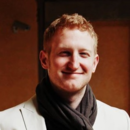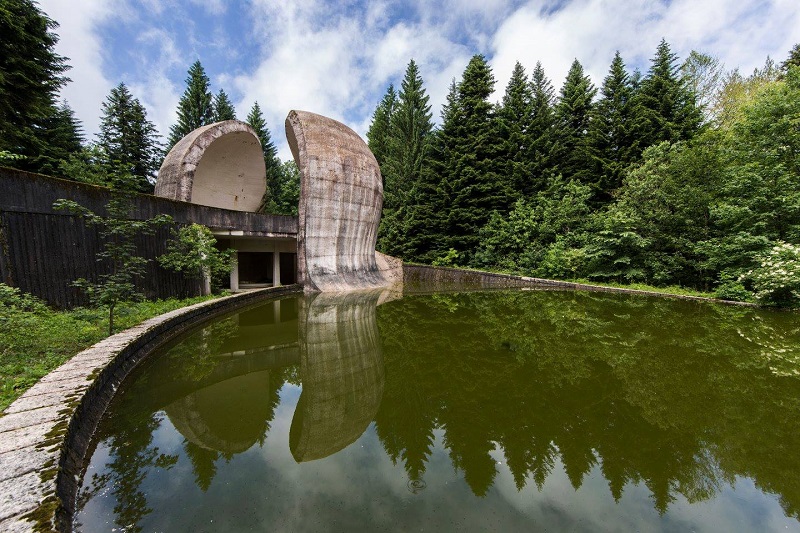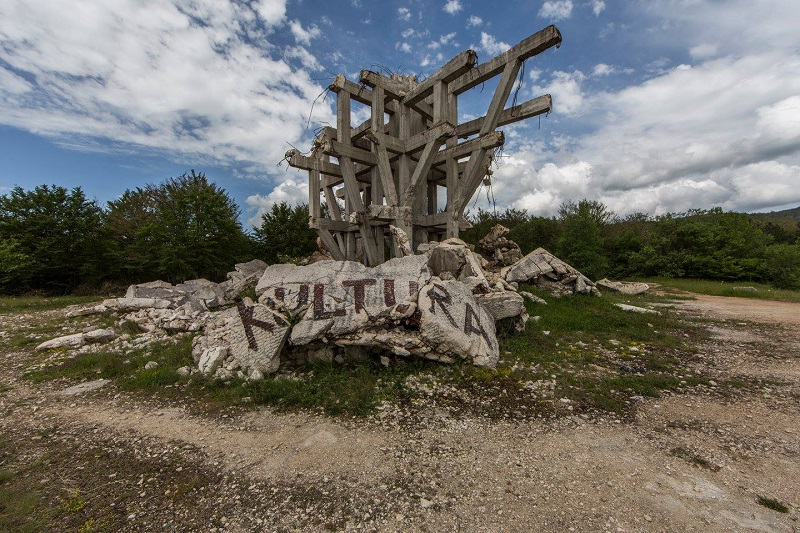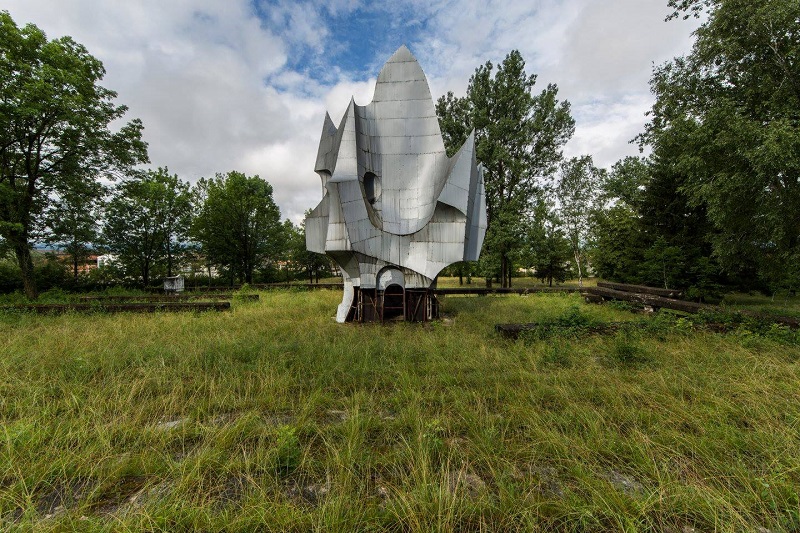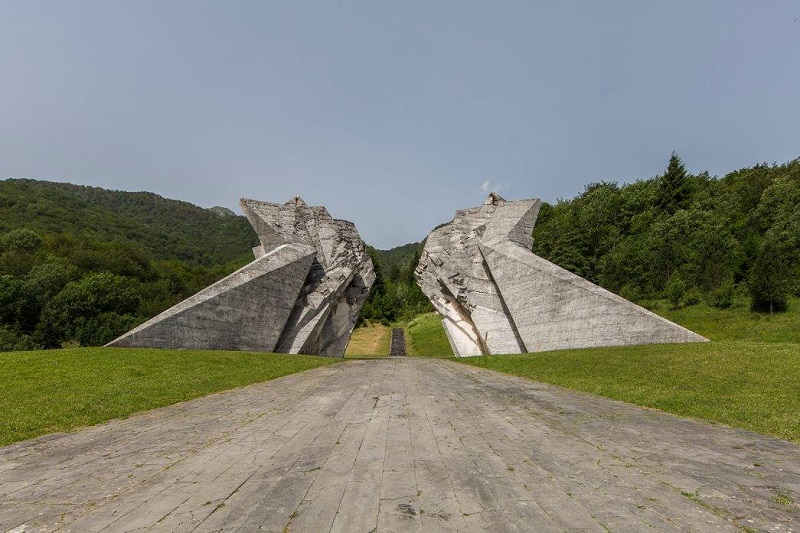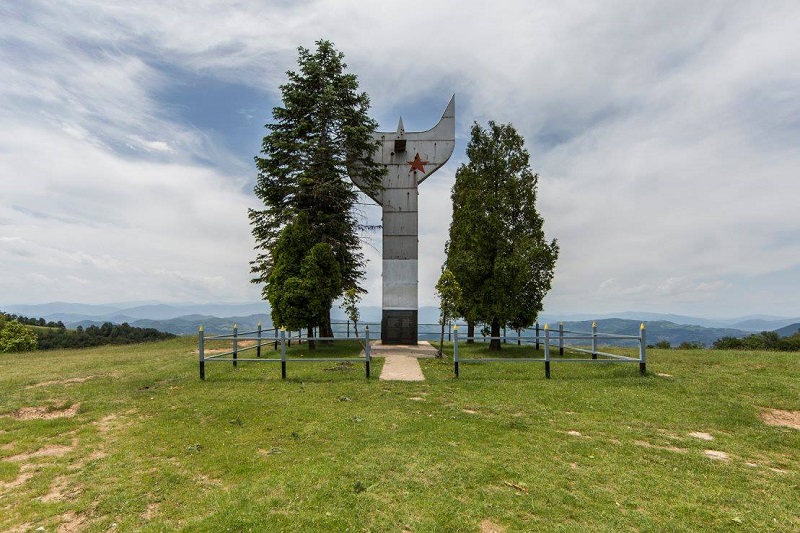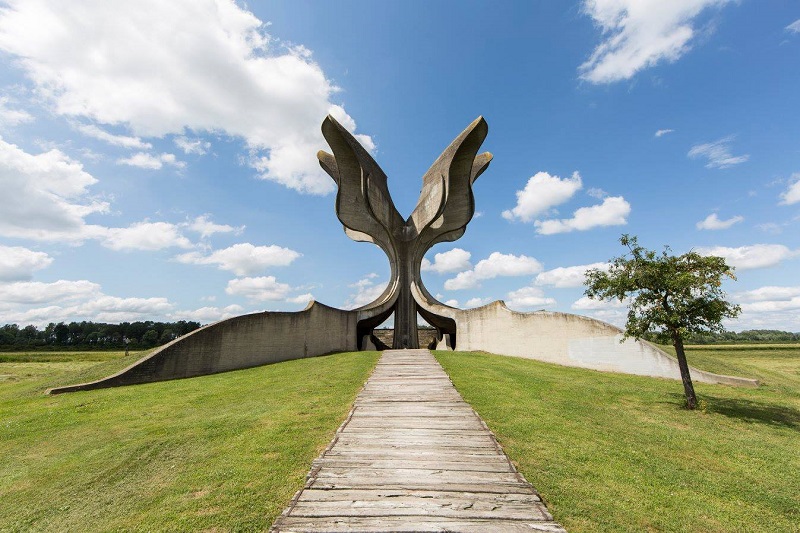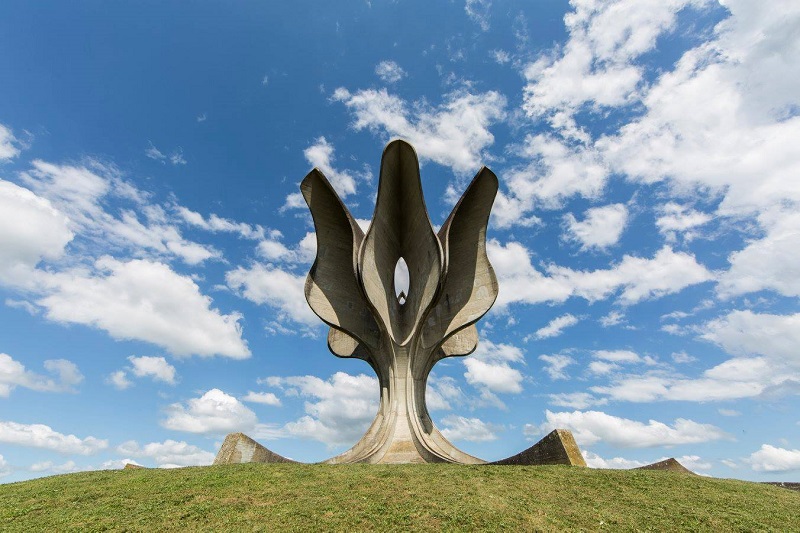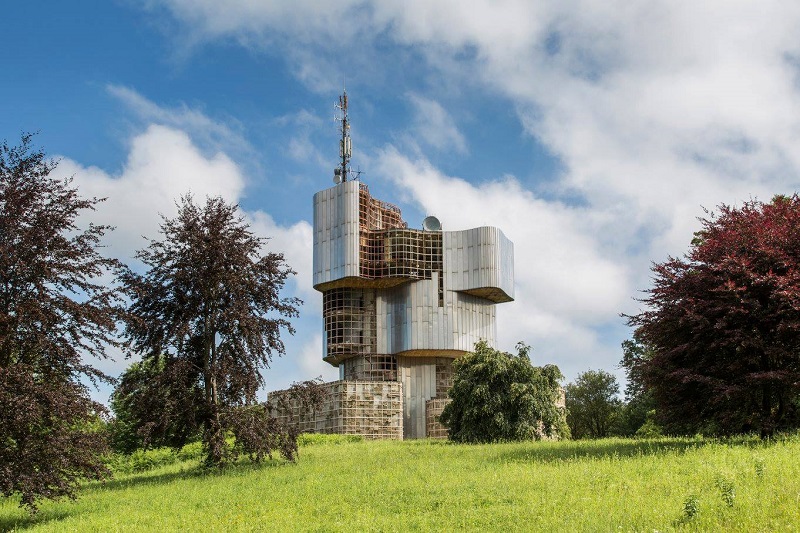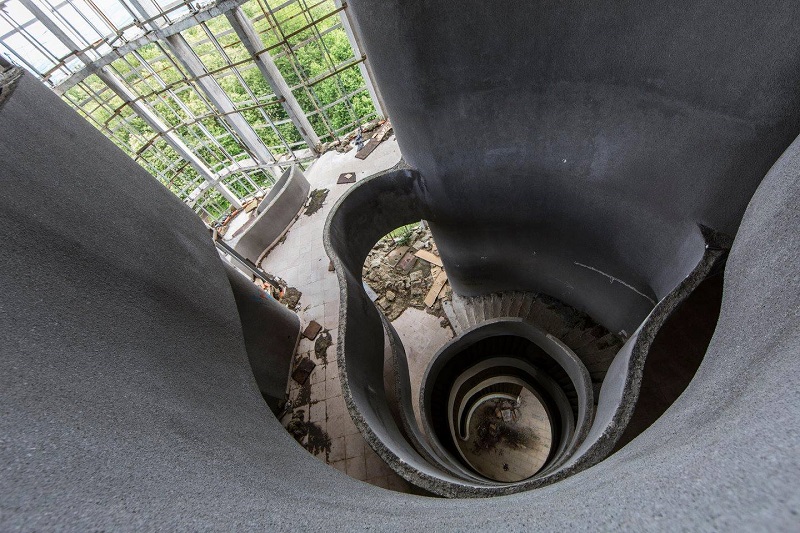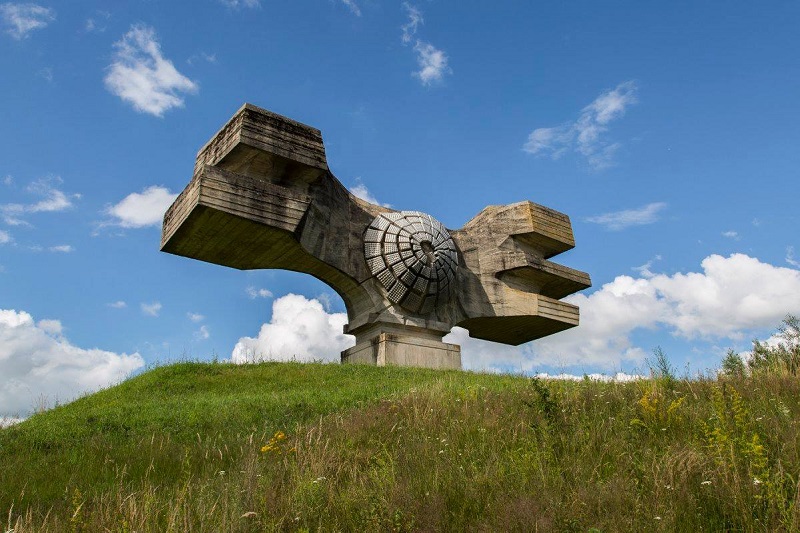Main author
Michael BrooksSpomeniks
The French photographer Jonk describes himself as a 'ruins hunter', and has travelled across Eastern Europe documenting the remains of Spomeniks.
A range of spomeniks, which literally means 'monument', were built in the 1960/70s under former Yugoslavian president Tito’s regime. Their purpose was to pay homage to the Communist resistance to the Nazi occupation, and commemorate sites of important WWII battles or concentration camps.
Although according to the writer Owen Hatherley, 'there was no specific call or commission by Tito or the Yugoslav government for monumental sculptures, nor for abstract ones, nor were they all Second World War memorials as such.'
Jonk drove more than 5,000 km across the former Yugoslavia in search of these remaining structures, which are spread across Bosnia and Herzegovina, Serbia, Croatia, Kosovo, Montenegro, Macedonia and Slovenia.
In the 1980s, the monuments attracted millions of visitors every year, but when Yugoslovia burst into civil war many of them were damaged or destroyed. More than two decades after the country dissolved, some of the spomeniks remain as part of official memorials, some are more or less maintained and others are totally abandoned.
For a comprehensive history and exploration of the spomeniks, a massive amount of information, maps, photos and data can be found at the Spomenik Database.
You can follow Jonk Photography on Facebook here.
Grmec, Bosnia - Monument to the Revolution
Erected in 1970, designed by an unknown artist
Makljen, Bosnia
Erected in 1978, designed by Bosko Kucanski
Sanski Most, Bosnia
Monument to the Victims of Fascism and the Fighters of the National Liberation War
Erected in 1970, designed by Petar Krsti.
Tjentiste, Bosnia - The Battle of Sutjeska Memorial Monument
Erected in 1971, designed by Miodrag Zivkovic and Ranko Radovic.
Zenica, Bosnia - Monument to the fallen fighters of Zenica Partisan Detachment
Erected in 1968 by an unknown designer
Jasenovac, Croatia
Monument to the victims of Ustase atrocities during World War II in Jasenovac.
Erected in 1966, designed by Bogdan Bogdanovi
Petrova Gora, Croatia
Erected in 1981, designed by Vojin Baki
Podgari, Croatia - Monument to the Revolution
Erected in 1967 by Dušan Damonja, as a memorial to a 1941 uprising in Croatia.
The monument was commissioned by President Tito to be dedicated to the people of Moslavina who died during World War II. The abstract monument was meant to symbolise power and triumph.
Mitrovica, Kosovo
Erection date unknown, designed by Bogdan Bogdanovi
Kosmaj, Serbia
Erected in 1970, designed by an unknown artist
Nis, Serbia
Erected in 1963, designed by Ivan Saboli
Photographs copyright Jonk Photography.
[edit] Find out more
[edit] Related articles on Designing Buildings Wiki
- Abandoned movie theatres in Russia.
- Architectural photography.
- Brutalism.
- Constructivist architecture.
- Deconstructivism.
- Imagine Moscow exhibition.
- Landscapes of human exploitation.
- Ministry of Transportation Building, Georgia.
- Monument and context.
- Naturalia: Reclaimed by nature.
- Nowa Huta - Communist tour review.
- Owen Hatherley - Landscapes of Communism.
- Photographing buildings.
Featured articles and news
A change to adoptive architecture
Effects of global weather warming on architectural detailing, material choice and human interaction.
How big is the problem and what can we do to mitigate the effects?
Overheating guidance and tools for building designers
A number of cool guides to help with the heat.
The UK's Modern Industrial Strategy: A 10 year plan
Previous consultation criticism, current key elements and general support with some persisting reservations.
Building Safety Regulator reforms
New roles, new staff and a new fast track service pave the way for a single construction regulator.
Architectural Technologist CPDs and Communications
CIAT CPD… and how you can do it!
Cooling centres and cool spaces
Managing extreme heat in cities by directing the public to places for heat stress relief and water sources.
Winter gardens: A brief history and warm variations
Extending the season with glass in different forms and terms.
Restoring Great Yarmouth's Winter Gardens
Transforming one of the least sustainable constructions imaginable.
Construction Skills Mission Board launch sector drive
Newly formed government and industry collaboration set strategy for recruiting an additional 100,000 construction workers a year.
New Architects Code comes into effect in September 2025
ARB Architects Code of Conduct and Practice available with ongoing consultation regarding guidance.
Welsh Skills Body (Medr) launches ambitious plan
The new skills body brings together funding and regulation of tertiary education and research for the devolved nation.
Paul Gandy FCIOB announced as next CIOB President
Former Tilbury Douglas CEO takes helm.
UK Infrastructure: A 10 Year Strategy. In brief with reactions
With the National Infrastructure and Service Transformation Authority (NISTA).
Ebenezer Howard: inventor of the garden city. Book review.
Airtightness Topic Guide BSRIA TG 27/2025
Explaining the basics of airtightness, what it is, why it's important, when it's required and how it's carried out.






